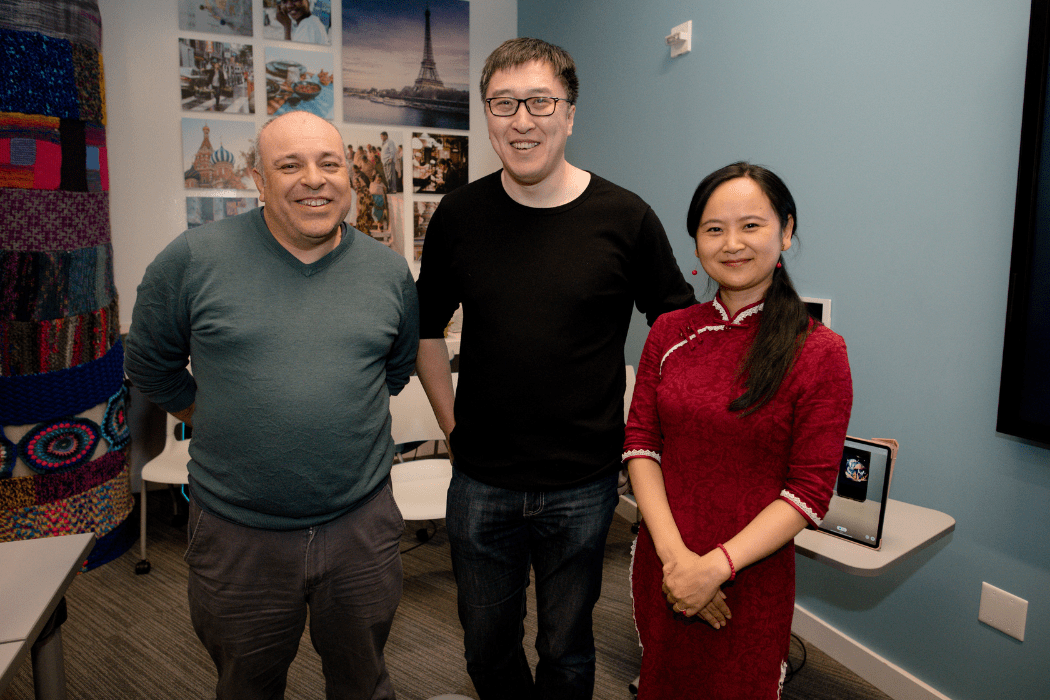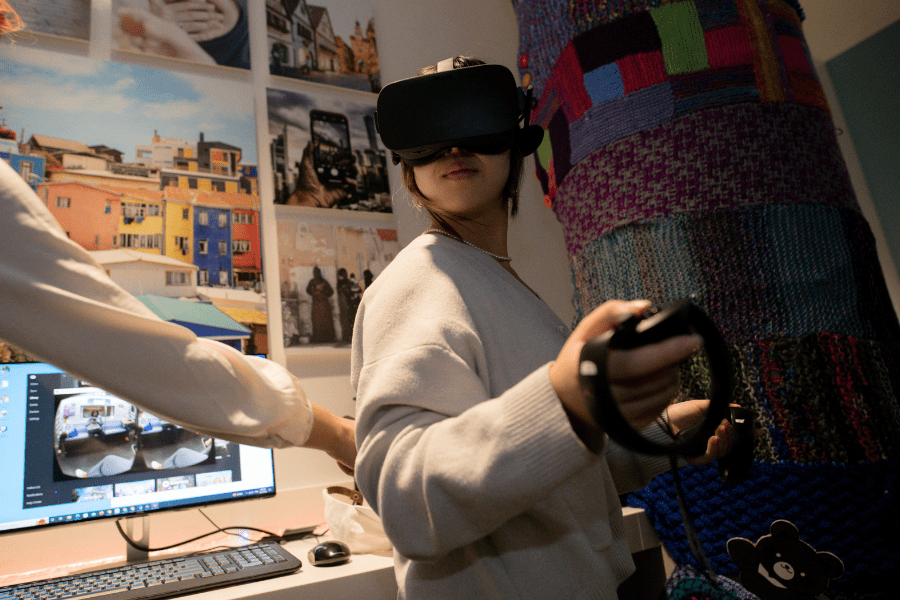
Immersive Cultural Innovation Fund Supports Cultural Exploration through AR and VR Technologies
By KellyAnn Tsai
This article has been edited, as of October 2024, to reflect recent name changes.
Established in 2021 by 2006 Carnegie Mellon University alumnus Henry Ha, the Immersive Cultural Innovation Fund supports the development of courses that explore storytelling through media elements such as virtual reality (VR), augmented reality (AR) and immersive installation.
The fund provides opportunities for colleagues and students in Carnegie Mellon University’s Department of Languages, Cultures & Applied Linguistics (LCAL) [formerly Modern Languages], the School of Art and Integrative Design, Arts and Technology (IDeATe) to create exciting technology-driven work that explores language, culture and identity.
This year, the fund helped launch courses such as “Digital Realities: Introducing Immersive Technologies for Arts and Culture,” taught by Stephan Caspar, and a new joint-taught course in Animation and Chinese Mythology designed by Gang Liu and Johannes DeYoung. The courses, which leverage AR and other immersive technologies, are held in The Kenner Room (formerly known as the Kenner Global Languages & Cultures Room), an immersive space for members of the CMU community and visitors to interact with each other locally and with people and places around the world.
To highlight the innovative digital creations made possible by the Immersive Cultural Innovation Fund, The Kenner Room recently hosted a showcase of student work. In their projects, students demonstrated the potential of immersive technologies to help others learn more about languages and cultures around the world.
(article continues below)
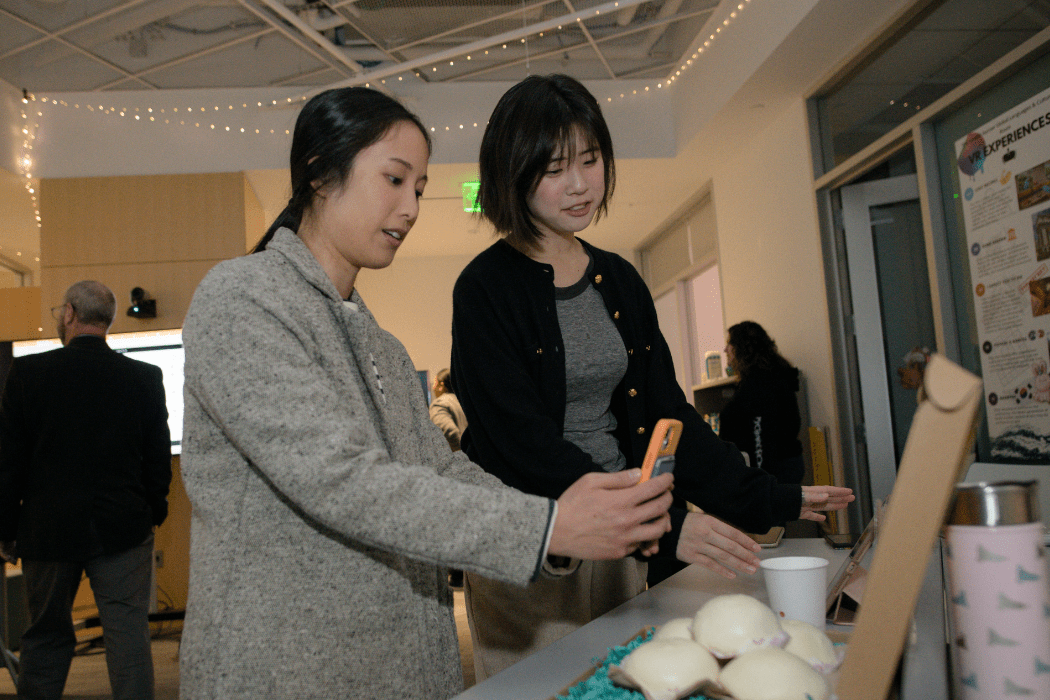
“Bun Island” by Anabelle Lee and Jeremia Lo
Sophomore Anabelle Lee and senior Jeremia Lo’s project “Bun Island” is an AR scavenger hunt. Users are given scannable AR clues that lead them on a real-life scavenger hunt to collect “ingredients” for Korean-style or Taiwanese-style red bean buns, a staple in many East Asian cultures.
Inspired by their respective Korean and Taiwanese heritages, Lee and Lo did extensive research about the histories of both countries in preparation for their project. Their research led to new revelations about their own familial, cultural, and historical backgrounds, such as the scope and impact of colonization in Korea and Taiwan. “It was cool to see that we are part of something on a global scale,” said Lee. “It was almost like a “me” research project to some extent.”
Lee and Lo’s goal for “Bun Island,” is to help de-homogenize common perceptions of East Asian culture. “I want people to realize there are these fine differences that emerge from each country's experiences and the things that we have to face that make us different,” said Lee.
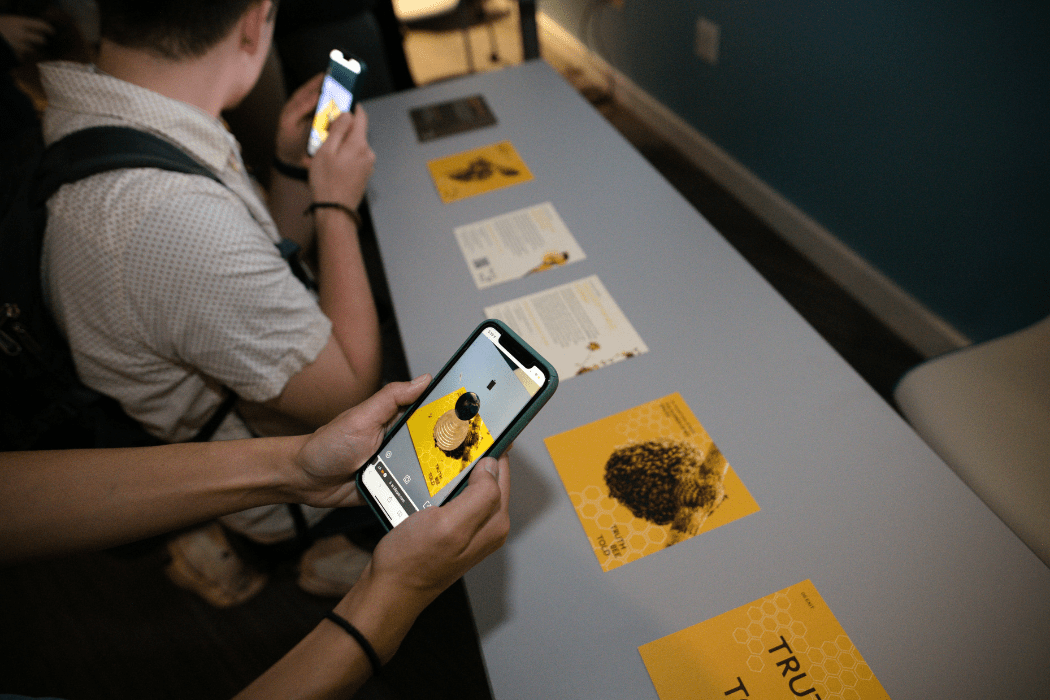
“Truth Bee Told” by Caitlyn Baensch and Alana Gerald
Rather than focusing on geographic or regional cultures, senior Caitlyn Baensch and junior Alana Gerald’s project paints a picture of humanity in the not-too-distant future. “Truth Bee Told” is a museum exhibit set in a fictional future world in which bees are extinct. Users scan a series of AR cards that provide facts about bees, simulating the experience of someone from the future who has never seen a bee.
“We wanted to capture this culture of the future, and how humans are thinking about the environment and bees, and how that's a reflection of the kind of selfish, destructive culture of humans that caused the extinction of bees,” said Baensch.
Baensch and Gerald hope their project prompts people to reflect and realize that this “future” may be closer than we think. “Part of that was not labeling what year this future museum is set in, leaving that up to imagination and creating this sense of urgency,” said Baensch. “This could happen in a year, this could happen in 10 years, or this could happen very soon.”
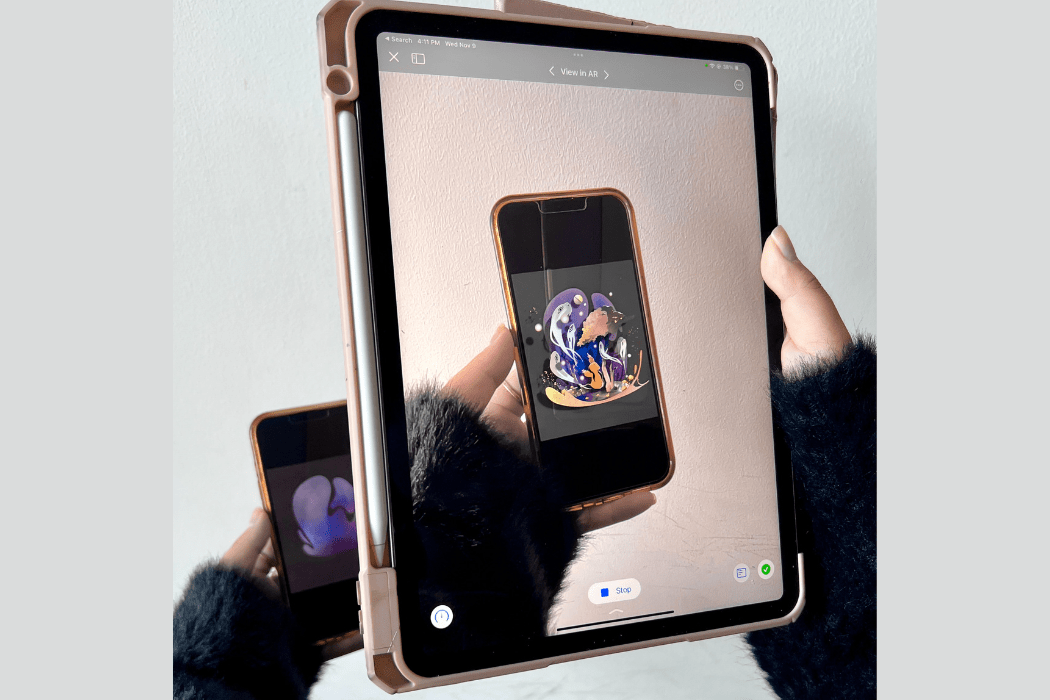
"AR Flying Fish Festival (飛魚季)" by Shannon Lin
Shannon Lin, a junior double majoring in Decision Science and Design, used the project as an opportunity to explore the potential of AR technologies. Her work projects a hand-drawn illustration of the Taiwanese Flying Fish Festival into AR space using code, lending the piece a vivid sense of fluidity and movement.
“I enjoyed how people could interact with it and get a feeling of what something static was trying to convey more easily,” said Lin.
Viewers can simply pick up an iPad to experience Lin’s artwork. This is in contrast to many AR exhibits, which often rely on scanning QR codes or downloading apps to launch the immersive experience. Lin sees this “ease of access” as a way to more readily use immersive technologies in other fields such as advertising or education.
“If it gets to a point where people can just lift up their phone, it would make [it] a much more interesting and enjoyable experience for people,” Lin said.
For the students, the new “Digital Realities: Introducing Immersive Technologies for Arts and Culture” course has given them opportunities to interact with cutting-edge technologies and explore the many ways they can be used to create engaging experiences.
“This class is so exciting and so different from other classes that I've taken at CMU in the way that it makes these really powerful, amazing technologies so accessible to us,” said senior Caitlyn Baensch.
The course’s focus on language, culture, and identity has also expanded students’ understanding of how immersive technologies can be used beyond the realm of entertainment. “This class is just an example of how we can use VR experiences to educate and inform others about different languages and cultures, and how we can use VR in a collaborative, educational setting,” said junior Alana Gerald.
“This class is so exciting and so different from other classes that I've taken at CMU in the way that it makes these really powerful, amazing technologies so accessible to us."
Stephan Caspar, creator and instructor of the “Digital Realities” course, is excited to see students explore the potential of immersive technologies.
"We're able to innovate using this fund, we're approaching the teaching of immersive technologies using a humanistic approach, emphasizing the way that AR and VR are being used by storytellers,”said Caspar, Director of The Kenner Room. “This is a course where students become directors, animators and developers, where they are able to explore culture through language and identity, and ultimately create experiences that reflect their own perspectives."
Moving forward, the Immersive Cultural Innovation Fund will continue to support projects that explore storytelling and encourage intercultural understanding through immersive media. “We invite directors and content creators to provide experiences for the room,” said Caspar. “The fund means that we can particularly target groups and individuals whose stories are often underrepresented.”
Ultimately, the goal is to encourage students to think creatively and pioneer new and engaging ways to help people understand the world around them.
Inspired by the work of her classmates, Gerald is ready to get started. “It made me want to jump back into the creation process to make something even better.”
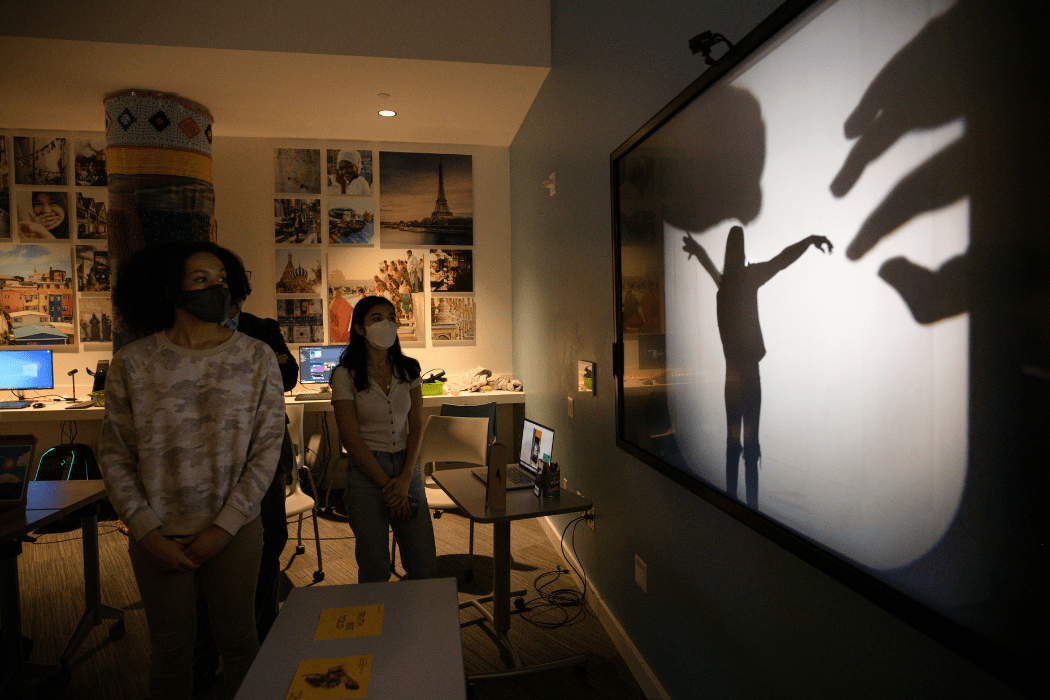
Shadow Storytelling exhibit by students in Professor Johannes DeYoung’s Advanced Animation Studio course features videos created through the use of overhead projection transparencies.
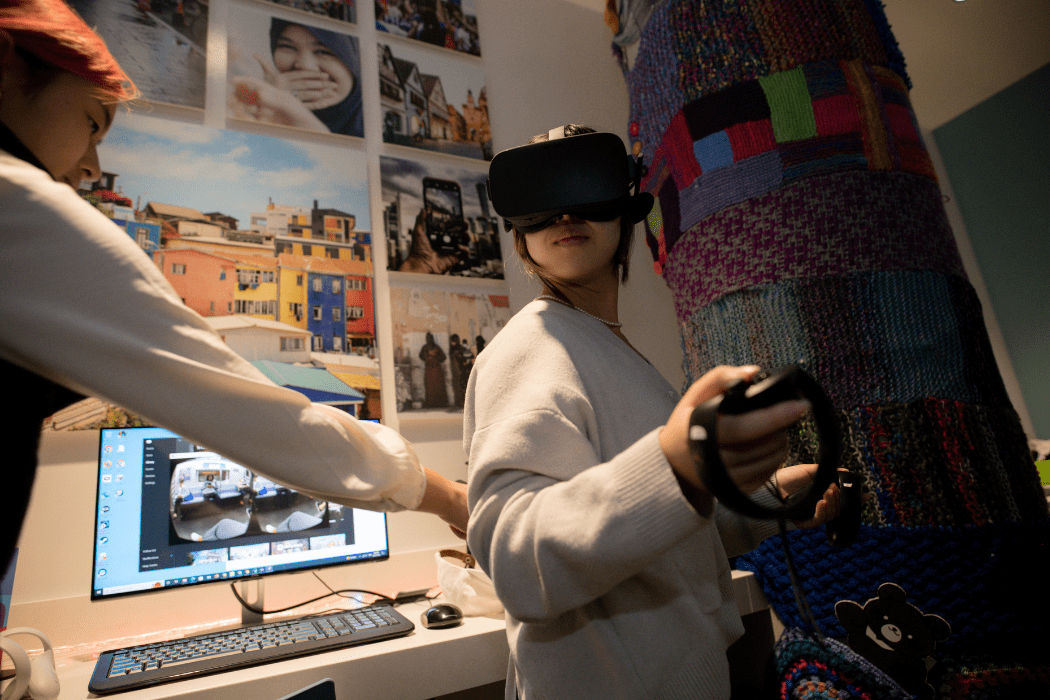
Shannon Lin explores classmate Shelly Zhang’s VR-based project
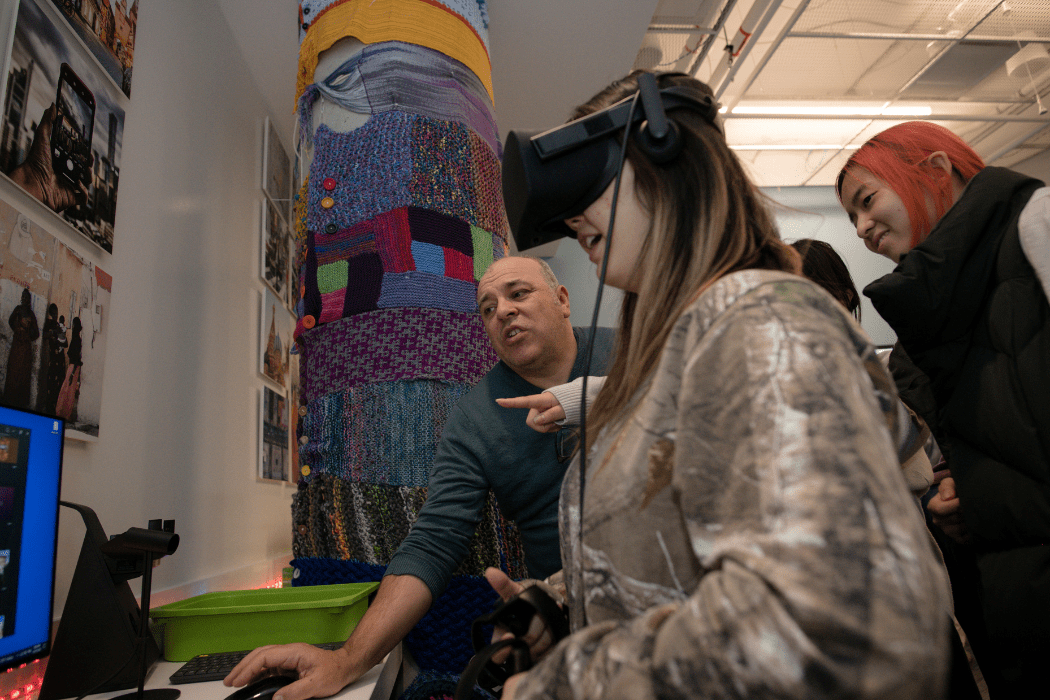
The Kenner Room offers students the opportunity to explore games and exhibits in virtual reality.
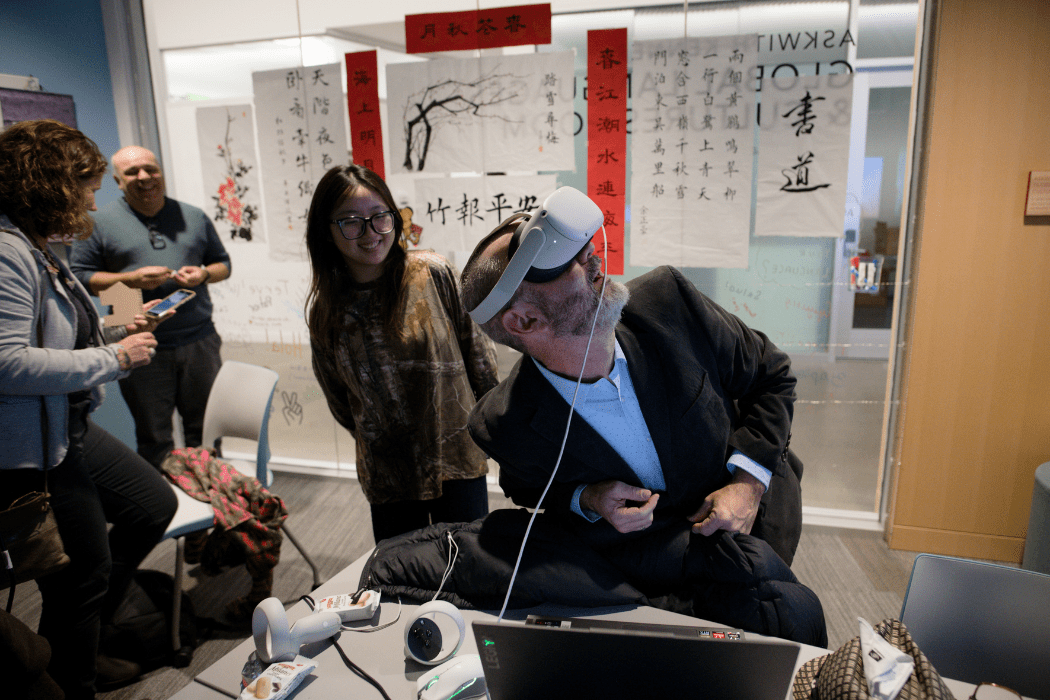
LCAL professor Sébastien Dubreil experiences Ruifen Jin’s VR project at the Immersive Cultural Innovation Fund showcase.
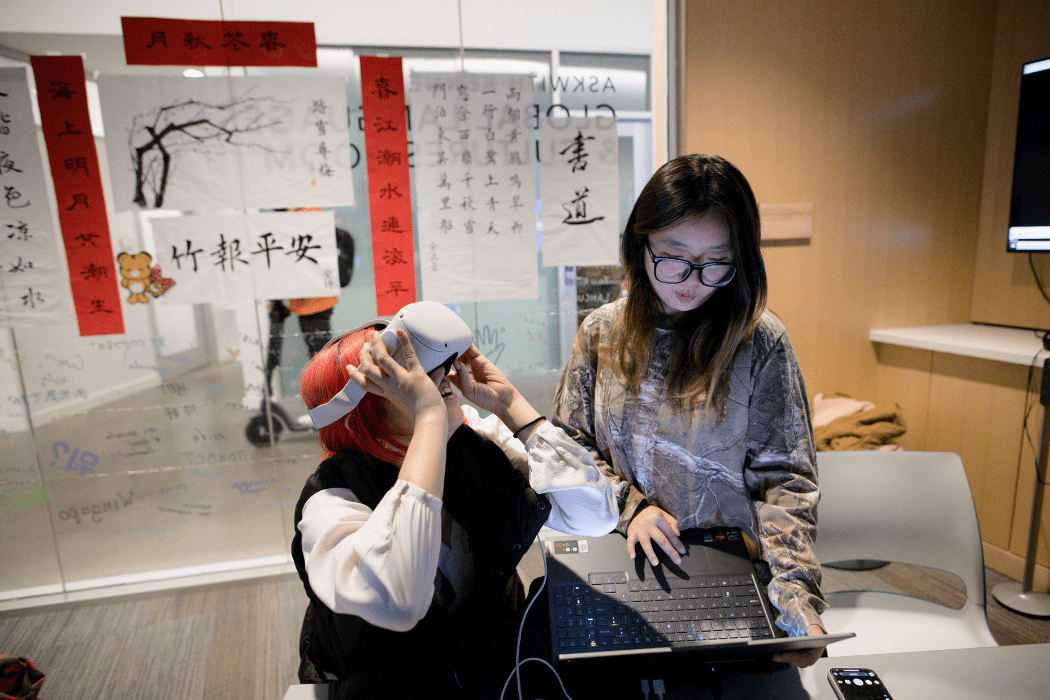
Ruifen Jin and Shelly Zhang set up their virtual reality project.
